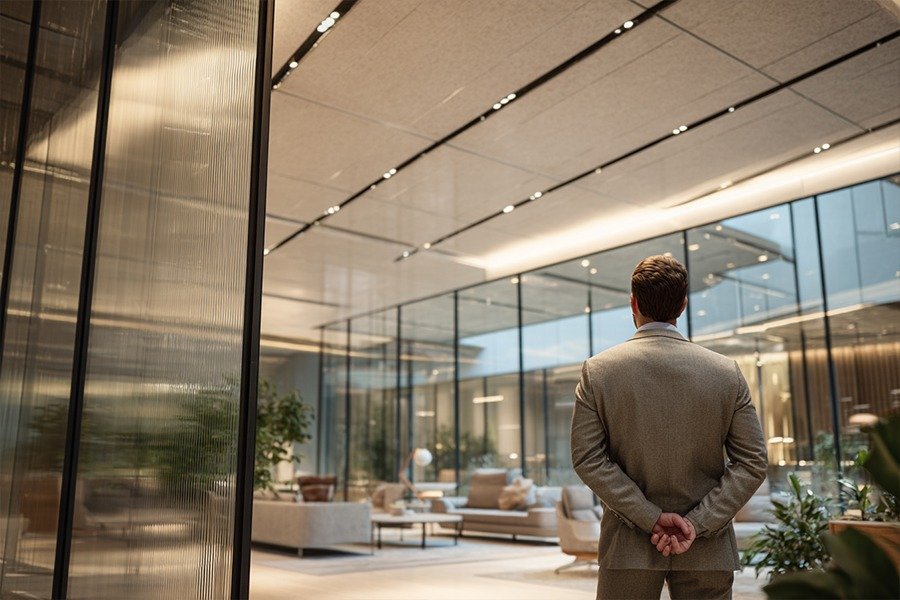
Before You Plan Your 2026 Office: The Two Questions Every Leader Should Be Asking
As 2025 draws to a close, leadership teams across Delhi NCR are making decisions that will influence how their organisations work in the coming year. Budgets are under review. Lease renewals are on the table. Expansion or consolidation is being discussed.
Yet one pattern is repeating across conversations with CEOs, CFOs, CHROs, and Admin Heads: the office is being used more, but it isn’t performing better.
Teams have returned, but productivity behaviour is inconsistent. Collaboration is increasing, but distraction is increasing with it. Hybrid patterns have stabilised, but space usage is unpredictable.
This gap has created a new priority for 2026: the workspace must work harder than it did in 2025.
At AIA, this shift is visible across projects with several high-growth enterprises planning their next office move.
When we meet leadership teams, two questions emerge repeatedly – questions that define whether an organisation is preparing its workspace for the realities of next year or simply repeating the assumptions of the last one.
1. Are we optimising the space we already pay for?
Most offices carry inefficiencies that go unnoticed because they don’t appear in financial statements. Unused pockets. Misaligned seating clusters. Poor circulation paths. Over-reliance on enclosed meeting rooms. Spaces that look busy but don’t support focus.
In many cases, organisations can recover 20–30 percent efficiency without increasing square footage. The issue isn’t lack of space – it’s lack of alignment between how teams should work and how the office allows them to work.
When planning for 2026, this becomes a financial question, not an architectural one.
Every square foot has a cost attached to it. The return on that cost depends on whether the space enables people to perform without friction.
2. What must change for next year’s goals to actually land?
This is the question that separates routine upgrades from strategic redesign.
Workplaces are no longer shaped by aesthetics alone.
The real drivers today are operational:
- Movement patterns
- Noise behaviour
- Cluster design
- Acoustics
- Visual distraction
- Hybrid rhythm
- Team proximity
- Meeting duration and frequency
These elements decide whether teams collaborate effectively or lose time navigating interruptions. They decide whether employees feel supported or drained. They decide whether leadership goals translate into daily behaviour.
If 2026 targets require sharper execution, clearer thinking, and smoother teamwork, the space has to reinforce those outcomes If the office remains unchanged, the organisation enters the new year with last year’s constraints.
Why this matters now
The end of the year offers a rare advantage: leaders can review their workspace with fresh clarity before budgets, leases, and decisions lock in.
Most companies wait until Q1 to reconsider their office. The ones who act before the year closes step into 2026 with fewer constraints and stronger control over cost, efficiency, and organisational behaviour.
The Office in 2026 Will Be a Performance Tool
Across AIA’s work in Delhi NCR, one message has become clear: the companies outperforming their competition are the ones using design as a performance lever, not a decorative exercise.
They are asking better questions. They are evaluating space the way they evaluate technology, hiring, and financial planning. They are treating the office as a strategic asset, not a fixed expense.
As 2026 approaches, these two questions can shape the direction of every workspace decision:
Are we getting the most out of what we already have?
And what must evolve for our teams to perform better next year?
Leaders who can answer these early step into 2026 with a workplace that supports growth instead of slowing it down.

